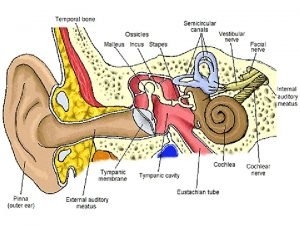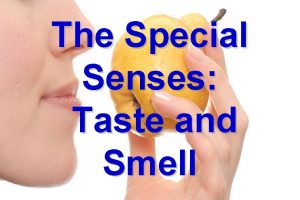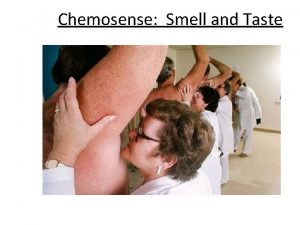Taste Smell Touch Lecture Chapter 8 Sense of










- Slides: 10

Taste, Smell & Touch Lecture Chapter 8

Sense of Smell Air enters nasal cavities where olfactory receptors in roof of nasal cavity are stimulated and pass message to olfactory nerve

Olfactory pathways are closely linked to limbic system Odors recall memories and arouse emotional responses

Sense of Taste buds (Gulfactory cells) Receptors for taste located on the tongue Located around tongue papillae circumvallate (back of the tongue) fungiform (primarily on sides and front of tongue))

Five Basic Taste Sensations Sweet receptors Sour receptors Bitter receptors Salty receptors Umami receptors Meaty/savory/texture Did you know… “Hot” spicy foods actually activate the pain receptors in your tongue and give you the sensation of heat in your mouth

Food must be dissolved in water to be “tasted” Purpose of saliva There are 2 nerves that relay the signal of taste to the brain Facial nerve: anterior 2/3 of tongue Glossopharyngeal nerve: posterior 1/3 of tongue

Touch Only sense that is not localized to one region of the body

Bottom layer of skin (dermis) contains nerve endings that sense touch and send signal to spinal cord and then to the brain Most common nerve endings are for: Heat Cold Pain Pressure

Some areas of the body contain more nerve endings and therefore are more sensitive to touch Examples: face, hands, feet, tongue

Touch receptors Most common: Thermoreceptors (heat & cold) Pain receptors Mechanoreceptors (pressure & texture) Receptors are not evenly spaced throughout body (some areas have more or less of each of the different types of receptors)



















